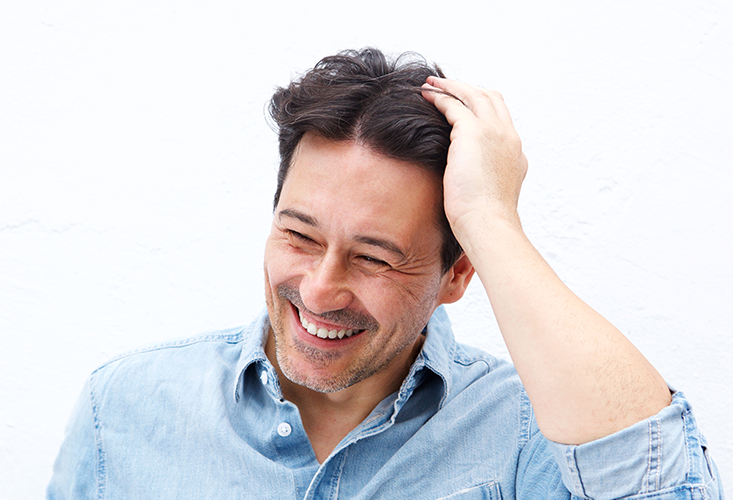Hair transplantation stands out as a solution that offers permanent and natural results, but the long-term success and permanence of the transplanted hair depend on some critical factors. Hair follicles taken from the donor area, resistant to shedding, can be permanent for a lifetime when applied with the right techniques and by an experienced team. However, factors such as the doctor's expertise, the method used, the quality of the donor area, post-operative care, and lifestyle directly affect the aesthetic appearance and durability of the result. In particular, steps such as PRP applications and avoiding chemical products support the health and longevity of the transplanted hair. In hair transplantation, hair follicles are taken from the nape and ear area, which is called the donor area. The hair follicles in this area are genetically resistant to the DHT hormone, which causes hair loss. For this reason, the follicles taken from the donor area continue to grow for life in the area where they are planted. Some of the transplanted hair may fall out in the first 2-3 months after the operation. This process is completely natural and is known as "shock shedding". Then the hair grows back and regains its final appearance within 9-12 months. During this period, it is very important that patients do not panic and carefully follow the doctor's recommendations. In the following years, there may be slight thinning due to aging, but the transplanted grafts do not fall off completely. Although the transplanted hair is genetically non-shedding, the quality and longevity of the result depend on many factors: Hair transplantation is not only a technical procedure; it is also an application that requires surgical experience, aesthetic perspective, and sensitive work. An experienced doctor and a specialist medical team ensure that the grafts are planted at the right angle and density. This increases both naturalness and permanence. In addition, the doctor's design of the hairline in accordance with the facial features of the person provides a natural appearance for many years. Transplants made at the wrong angle can prevent the hair from looking natural and cause a sparse appearance in the long run. When choosing between methods such as FUE and DHI, your hair structure, donor area and targeted density should be considered. The right technique directly affects the healthy attachment rate of the grafts. One of the most critical factors that determines the success and permanence of hair transplantation is the quality of the donor area. Donor area: It usually covers the nape and upper ear areas. This area contains hair follicles that are genetically resistant to the DHT hormone that causes hair loss. However, the density, thickness, and health of the hair in this area vary from person to person. If the hair follicles in the donor area are thick, strong, and of sufficient density, the transplanted hair maintains the same health in the new areas and lasts for many years. However, if the hair in the donor area is sparse, fine, or weak, the density and long-term permanence to be obtained from transplantation may also be limited. Meticulously following the instructions given by the doctor in the post-transplantation period is critical for the implanted grafts to hold and grow healthily. Even small mistakes in this process can prolong the recovery time or adversely affect the results. Examples of things to look out for: In addition to these, PRP (Platelet Rich Plasma) applications support faster nutrition, strengthening, and healthy growth of the transplanted grafts. Regular PRP sessions contribute to thicker and more durable hair and improve survival, thickness, and long-term strength of the transplanted hair. After hair transplantation, it is necessary to stay away from shampoo, dyes, and care products containing harsh chemicals. Such substances can impair the health of the scalp and damage the grafts. Reducing smoking and alcohol consumption, eating a balanced diet, and keeping stress under control help keep the transplanted hair healthy for many years.Permanence of Hair Transplantation
Donor Area and the Basis of Permanence
Shedding is Normal in the First Period
Factors Affecting the Permanence of the Transplanted Hair
1. Experience of the Doctor and Medical Team
2. Technique Used
3. Quality of the Donor Area
4. Post-Operative Care and PRP Application
5. Staying Away from Chemical Products
6. Lifestyle and General Health
Is Hair Transplantation Permanent? How Do Results Change Over the Years?




